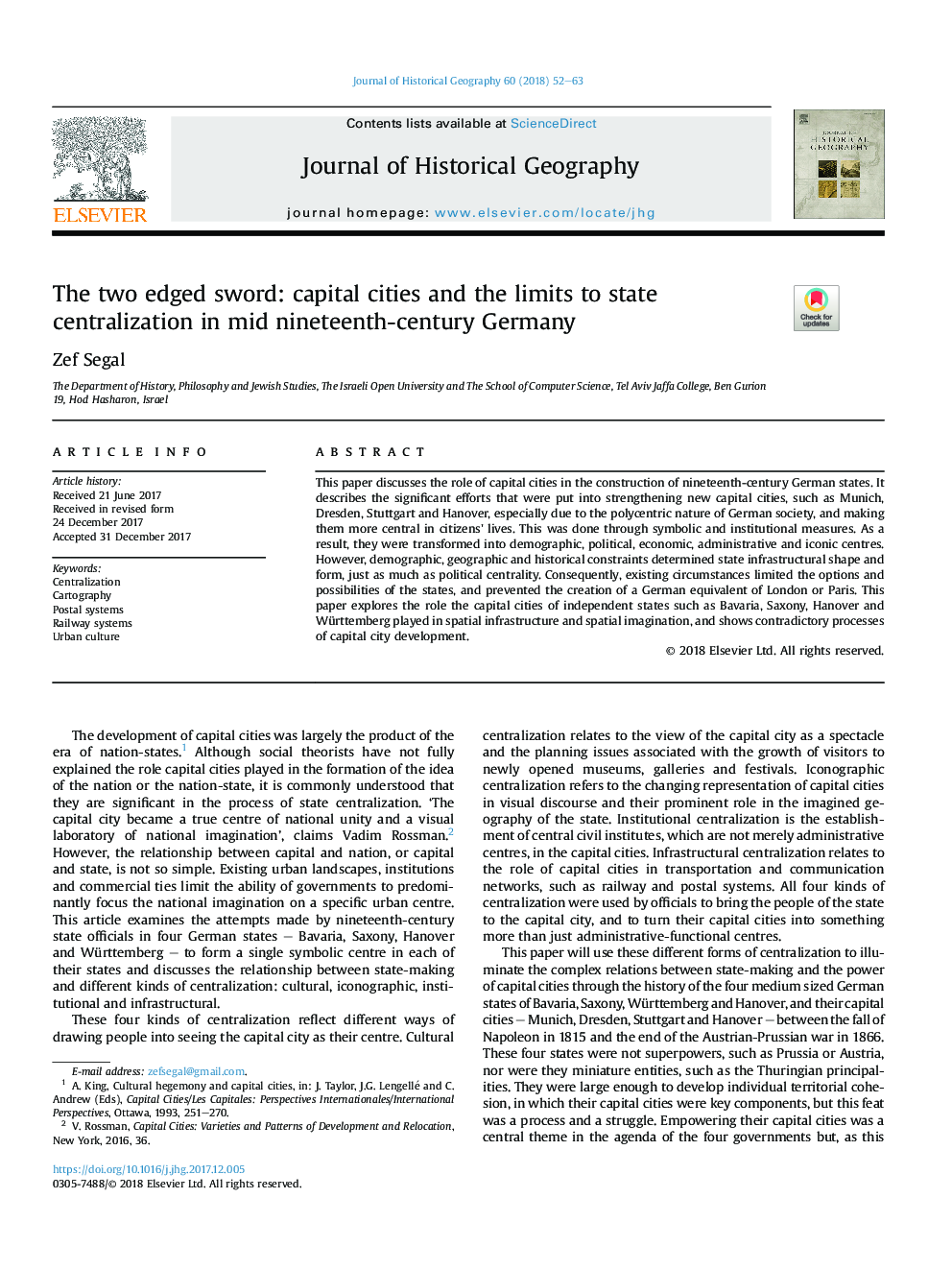| Article ID | Journal | Published Year | Pages | File Type |
|---|---|---|---|---|
| 7446754 | Journal of Historical Geography | 2018 | 12 Pages |
Abstract
This paper discusses the role of capital cities in the construction of nineteenth-century German states. It describes the significant efforts that were put into strengthening new capital cities, such as Munich, Dresden, Stuttgart and Hanover, especially due to the polycentric nature of German society, and making them more central in citizens' lives. This was done through symbolic and institutional measures. As a result, they were transformed into demographic, political, economic, administrative and iconic centres. However, demographic, geographic and historical constraints determined state infrastructural shape and form, just as much as political centrality. Consequently, existing circumstances limited the options and possibilities of the states, and prevented the creation of a German equivalent of London or Paris. This paper explores the role the capital cities of independent states such as Bavaria, Saxony, Hanover and Württemberg played in spatial infrastructure and spatial imagination, and shows contradictory processes of capital city development.
Related Topics
Social Sciences and Humanities
Arts and Humanities
History
Authors
Zef Segal,
